Ariel People |
| The history of Ariel motorcycles has several key figures that were responsible for its design, development,
promotion and leadership throughout production. |
| James Starley was a machinist and inventor who first worked for a manufacturer of sewing machines and later started
his own competing company in the early 1860s. In the late 1860s Starley and his partner were introduced to bicycles. At the time bicycles
were made of wood and iron with wheels similar to wooden carriage wheels. They were heavy and known as "boneshakers". Starley and
William Hillman designed and patented a cycle wheel built with tensioned wire spokes. The wheels were much lighter than the wooden spoke
wheels used at the time. Spoked wheels are also springier cushioning bumps slightly. When Starley began building light-weight all-metal
bicycles using these wheels he named them "Ariel". |
| Charles Sangster and two partners founded Cycle Components Mfg. Co in 1895, a company that made parts for the bicycle
industry. While continuing to supply others, Cycle Components purchased the Ariel name and began building their own bicycles. By 1898
they had designed a DeDion engined tricycle and by 1900 Charles was at the Thousand Mile Trial event with a motorized Ariel. He became
director of Cycle Components in 1901, and his son Jack Sangster joined the company in 1918. Charles Sangster led Ariel until 1931
when his son Jack took over. Cycle Components continued to build Ariel bicycles until 1932. |
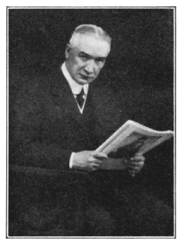 |
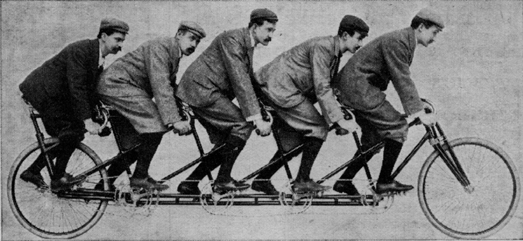 |
| Charles Sangster |
5 person Ariel with Sangster steering |
|
| Jack Sangster was owner or influential manager of Ariel from 1931 until 1961. He was born in 1896 and grew up in
motorcycles. He was an Ariel Team rider in the 1920's and then bought out the Ariel interest from Components Ltd in 1931 when it went
under during the Great Depression. He renamed the company Ariel Motors (JS) Ltd. and remained Director until Ariel's demise in 1966.
By 1935 Truimph, who was building both cars and motorcycles, was impoverished by poor sales it was going to shut down motorcycle production.
Sangster decided to keep the Triumph brand going and bought the motorcycle side of the business. Ariel engineers Edward Turner and Bert
Hopwood moved to Triumph following the acqusition. Sangster sold Ariel to BSA in 1944 and sold Triumph to BSA in 1951 at which time he
joined the BSA board of directors. Sangster retired as the chairman of BSA in 1961. |
| Valentine Page was an engineer designing engines for J.A.Prestwich prior to Ariel hiring him in 1925. Page was responsible for
Ariel's fresh new models in 1926, having designed two new engines that built Ariel's reputation for eye-catching sports motorcycles. This modernizing
resulted in the slogan "The Modern Motorcycle". Page left for Triumph in the early '30s where he designed Triumph's first parallel twin, then left
for BSA where he developed the engine for the M-24 Empire Star that ultimately became the Gold Star. Page returned to Ariel in the 50s where he
designed the innovative and successful Leader and Arrow two-stroke motorcycles. |
 |
| Valentine Page 1950s |
|
| Edward Turner was the designer of the Square Four engine. He began designing the engine before Ariel hired him
where it was developed and put into production by 1931. He went on to succeed Val Page as Ariel's technical director and was responsible
for adding flash and color to the Red Hunters. Turner later went on to design and develop the Triumph parallel twin that became an
icon of the British motorcycle industry. |
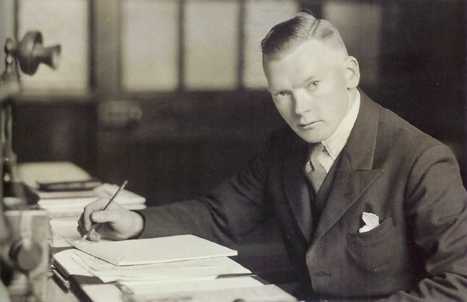 |
| Edward Turner at Ariel |
|
| Victor Mole was the Sales and Marketing Manager at Ariel during the late 1920s and early 1930s. Vic came to
Ariel in 1925 and created some memorable and imaginative promotional schemes for Ariel such as crossing the English Channel on an Ariel
motorcycle fitted with floats and the "Sevens" reliability test that included 7 school boys who all started a Square Four on the first kick. |
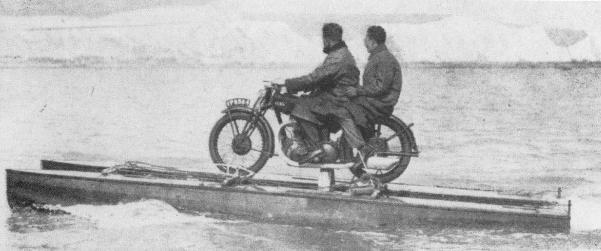 |
| Bert Hopwood was Chief Draftsman at Ariel during the 1930's. Hopwood came to Ariel in 1929 to assist Edward Turner with
the Square Four engine. Eventually he became head draftsman but moved to Triumph when Turner did. Hopwood went on to assist with the design
of the speed twin engine. The end of WWII found Hopwood at Norton where he designed the engine for the Dominator twin. Later at BSA he
would design the A-10 engine that would, in slightly modified form, power the Ariel 650 Huntmaster. |
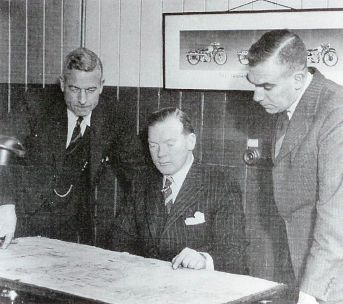 |
| Page, Turner and Hopwood |
|
| J Graham Oates was a motoring pioneer for Ariel during the 1920's & 1930's. He was one
of the most famous
Arielists during the pre-war era and gained fame from his adventurous exploits on Ariel motorcycles in Canada and England from
1928 to 1932. His first experience on an Ariel was in 1927 in Toronto, Canada where he rode a new 1927 500cc Ariel at a local
motorcycle dealer. Shortly thereafter he convinced the dealership to sponsor the first trans-Canada crossing on a motorcycle.
Ariel Motors sent him a new 1928 500cc motorcycle and a Canadian sidecar was fitted. He traversed the roads and railways of Canada,
going from Nova Scotia to Vancouver on this bike. Because roads were poor or non-existant, about 900 miles of his trip was done on the railroad ties of
the Canadian Pacific - a ride that beat up the rider and broke apart the sidecar. West to east Oates traveled 4,100 miles in 21 riding
days making his exploits world-famous. To avoid the rough rail lines and muddy roads Oates returned east through the US, not crossing into
Canada until Detroit. |
 |
 |
| Oates dipping the rear wheel in the Atlantic Ocean |
Oates 1928 outfit |
|
| Oates' second trip was in 1932 and it was a bit more adventurous. Using a new 1932 500cc Red Hunter with Swallow
sidecar, he took a trip from the Isle of Man to England and back to Canada. Oates drove the Ariel outfit further north in Canada than
any rubber tired vehicle had been driven. Oates didn't turn around until reaching Hudson's Bay on October 3rd in freezing temperatures.
Once south of the arctic weather, Oates continued west across Canada arriving in Vancouver in late October, and returning eastward
across the northern US. The total trip covered 12,000 miles on a new Red Hunter ... and all without an engine rebuild! |
|
|
| Ariel sponsored his 1932 trip as well and when he returned they promoted his exploits (and their Red Hunter's
reliability) in advertisements in The Motor Cycle (see ad below). |
|
|
| Note: These images were found in the excellent book "Aurora to Ariel". |
| Back to Ariel History |